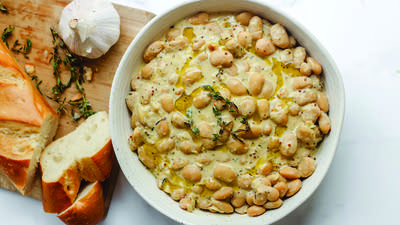Cherimoyas are native to the Andean highlands but they grow in many areas of the world with warm days, cool nights, and dry, frost-free conditions. The appearance is a bit mysterious: "like a pre-columbian jade pinecone, or the finial for a giant Inca four-poster bed," as Elizabeth Schneider puts it.
The greenish leathery skin protects a custard like, cream-colored flesh tasting like a subtle blend of banana, pineapple, vanilla and papaya. Their peak season is from November to May.
The biggest obstacle is finding a cherimoya in good condition and letting it ripen properly. They bruise easily and have to be carefully packed and shipped by air. Once you have it home, let it ripen at room temperature until it yields to gentle pressure like a peach. Once ripe, Cherimoyas can be refrigerated for a few days.
For further Information, David recommends these readings:
Uncommon Fruits and Vegetables: A Commonsense Guide, by Elizabeth Schneider (Harper & Row, 1986)
1997 Cherimoya Handbook
Before you go...
Each week, The Splendid Table brings you stories that expand your world view, inspire you to try something new, and show how food connects us all. We rely on your generous support. For as little as $5 a month, you can have a lasting impact on The Splendid Table. And, when you donate, you’ll join a community of like-minded individuals who love good food, good conversation, and kitchen companionship. Show your love for The Splendid Table with a gift today.
Thank you for your support.
Donate today for as little as $5.00 a month. Your gift only takes a few minutes and has a lasting impact on The Splendid Table and you'll be welcomed into The Splendid Table Co-op.



